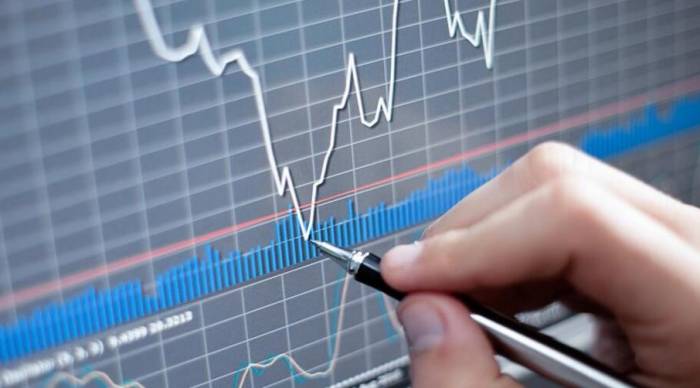How the Strengthening Dollar Affects Global Economic Recovery
In recent discussions surrounding the Federal Reserve's monetary policy, an intriguing narrative has emerged surrounding the potential impacts of interest rate adjustments on the value of the US dollar. If we consider a hypothetical scenario where the Fed lowers interest rates this September, the subsequent performance of the dollar is not as clear-cut as one might presume. Historical analysis reveals that in the past seven interest rate cut cycles spanning several decades, only two resulted in a depreciation of the dollar within three months. Conversely, during three cycles, the dollar actually appreciated significantly within the same timeframe, while the remaining two cycles led to relatively stable valuations. This complexity suggests that the relationship between Fed rate cuts and the dollar's strength is not linear, presenting scenarios where a cut may even correlate with a stronger dollar.
Extending our observation period to six months post-rate cut yields similar findings. Out of the seven cycles analyzed, two resulted in dollar depreciation, two remained stable, and three saw increases in value. The inference drawn from this data is that the Fed's decisions around interest rates do not inherently translate to dollar weakness; rather, they may play into a nuanced and sometimes precisely opposite relationship.
The current economic landscape only further underlines this notion. A comparative analysis of the economic fundamentals across major global economies reveals significant disparities. The resilience of the American economy starkly contrasts with the relatively weak fundamentals emerging from Europe and Japan. For instance, while demand-side figures suggested a substantial contraction in GDP growth from 3.4% in Q4 last year to 1.6% in Q1 of this year, a deeper examination into consumption and investment quickly highlights that internal demand has remained robust, demonstrating a growth rate of 2.3% which mirrors previous benchmarks. The resilience of US economic fundamentals post-pandemic continues to outperform other major economies, particularly evidenced by a recuperation in productivity that has not been matched by European or Asian counterparts.

Furthermore, external factors seem to favor the dollar’s dominance in global markets as well. Take Japan as a case in point. The steep devaluation of the yen can be attributed to divergent monetary policy paths and economic conditions. The yen's value has been closely tied to its performance in digital and green economies, leading to a noticeable decline in trade surpluses as Japanese firms pay hefty fees to American digital platforms and services. This trend of capital outflow reflects a recalibration of the current account and raises questions about Japan's position within emerging technological domains. On the same note, the pandemic has shifted the preferences of Japanese households towards international investments, creating fluctuations in their asset valuations when adjusted for exchange rate movements.
When viewing these economic dynamics global scale, one must consider the broader context in which the US finds itself. The ongoing war in Ukraine and the geopolitical tensions that have arisen since February 2022 solidify the dollar’s position as a safe haven and entail heightened risk aversion in financial markets. The historical context of interest rate cuts during the late 1990s illustrates how economic innovation can mitigate adverse impacts on the dollar, highlighting that timings involving substantive geopolitical crises coupled with economic reassessments solidify the dollar’s status rather than weaken it.
Additionally, the looming 2024 US presidential election adds another layer of complexity to the dollar's outlook. The possibility of Donald Trump returning to power raises speculation about an economic boom during his tenure, but this potential prosperity might simultaneously intensify inflationary pressures, complicating the Fed’s management of monetary policy. Hence, the market response leading up to and following the election could notably influence dollar trajectories.
In the grand scheme, the interplay between domestic economic reassessments, re-evaluations of geopolitical risks, and shifts in investment contenders in US markets all paint a supportive backdrop for the dollar. Furthermore, appreciating dollar expectations will create ripple effects throughout the global economy. It is vital to consider the implications on both the domestic and international front.
Focusing first on domestic impacts, the structure of the US Treasury market has shifted notably, with a growing proportion of sensitive investors influencing price volatility more than previously experienced. While institutional holdings traditionally provided a stabilizing effect, their declining share raises concerns surrounding market stability, especially as corporations face pressure from rising interest costs following the significant borrowing during the pandemic. The transition from high-grade (AAA) corporate bonds to higher-risk “junk” bonds signals a potential fragility in corporate financial health, particularly when set against the backdrop of recent banking challenges.
On the international stage, the rhetorical discourse surrounding how a strengthening dollar impacts developing nations carries weighty implications. While it may not immediately precipitate systemic crises, many emerging markets, especially those heavily indebted like Argentina and Brazil, could experience localized disruptions. These nations, reliant on capital inflows, remain particularly sensitive to U.S. monetary policy shifts and dollar value changes, necessitating a proactive approach towards debt management and restructuring to avoid exacerbating their fiscal challenges.
For China, the prevailing high yields in both the dollar and US investments could impose restrictions on its monetary policy, despite the need for a firm domestic strategy that seeks to maintain economic stability. While China’s broader economic goals ought to prioritize domestic advancements rather than fixate on external pressures, the reality of substantial US influence necessitates a consideration of the global financial landscape when crafting fiscal approaches.
In conclusion, the dynamic interplay between U.S. economic reassessments, monetary policy, and geopolitical tensions creates a multifaceted narrative surrounding the strength of the dollar. As these forces interact, maintaining a vigilant focus on the implications for both domestic stability and international economic resilience will be crucial in navigating the evolving financial landscape. Understanding these complexities extends beyond rudimentary financial analyses; it encapsulates a broader narrative about strategic decision-making, the fluctuating confidence of investors, and the stewardship of collective economic futures in an increasingly interconnected world.
Leave A Comment